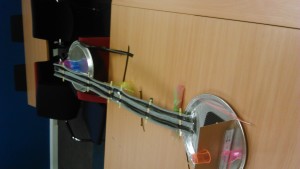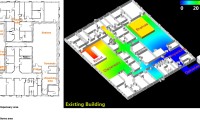CICE Conference 2015
Monday 22nd and Tuesday 23rd June 2015 saw the Centre of innovative and Collaborative Engineering (CICE) conference held at the Burleigh Court in Loughborough, collecting the minds of the current set of Research Engineers together for talks about the EngD process, writing up, networking and what happens after the EngD is completed.
The Monday schedule consisted of a morning networking workshop, presented by Bryan Johnston and Steph Reid and presentations by alumni on life during and outside the EngD process. Tuesday contained presentations on the world of work after the EngD, public engagement and open access publishing. The Tuesday afternoon was taken up with an internal Research Engineer’s meeting (like a school council, only older…).
Monday
The opening workshop on networking consisted of Bryan Johnston and Steph Reid giving advice and reasons for networking during events. Bryan talked about ways networking helped him through his career (going from organisation to organisation) and ways to be a better networker. This included a practical session after the morning break in which we attempted to network on each other. This, by and large, didn’t work overly well (in my opinion) as we weren’t given large amounts of time to practice, and it felt forced, due in part to the nature of it. There were some useful tidbits which may be useful later, but as someone who would try to avoid speaking to new people where ever possible, there was little immediate gain for me.
The afternoon sessions were broken into five speakers discussing various aspects of EngD life from the experiences of alumni of the CICE. Some of these were useful, providing those still early in their research to adapt some work practices in order to assist in a four-year completion, with the talks focusing primarily on writing up, publishing and completing
The evening networking dinner and social consisted of a sit down meal in the Burleigh Court restaurant followed by an engineering game. The engineering game consisted of teams trying to build a structure out of silly materials such as lolly sticks, rubber bands and foam piping with an aim to move a toy car from one plate to another. The game worked well in terms of networking with fellow Research Engineers, giving everyone a chance to get to know each other better and finding their comical engineering ideas.
Tuesday
Tuesday’s sessions began with more alumni presentations focused on life after the EngD, such as adapting to new subject areas, preparing for life in academia rather than industry and starting your own company. As someone who hasn’t quite decided on what to do at the end of my EngD, these were very helpful in the advice and experiences in what to do following EngD completion.
Following the coffee break, a current EngD researcher and a recent graduate gave a brief discussion on public engagement which provided fresh insight into areas where public engagement can take place. As a government-funded researcher, public engagement is a necessary part of my role, so this was a handy presentation.
This was followed by an introduction into new guidelines surrounding open access publishing. From the 1st April 2016, more papers should be made publicly available. This has many benefits for a researcher, as it allows their work to be found and cited (i.e. become the basis for future research) and allows the non-academic community to read and act upon the work carried out by a researcher.
Overall, the conference provided some good insights for me as a relatively (to the other attendees) new researcher, providing me the opportunity to learn from the mistakes of others. Similarly, it was nice to hear of some of the mistakes and problems faced by some of the alumni and current researchers to put my own issues into perspective. As it was perhaps summed up during a small discussion around my table, it’s important to remember that the light at the end of the tunnel is always there, it may just be very small, but there’s no reason to not continue building the tracks to get to it as a result.


